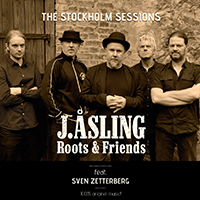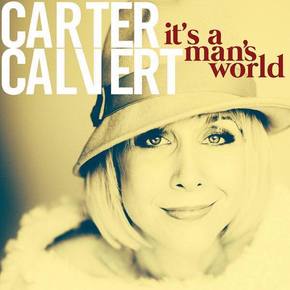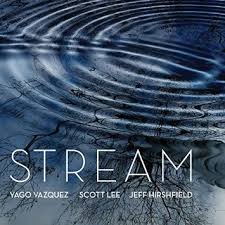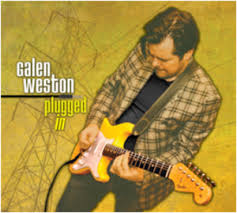
At times sounding like Rusted Root, Dr. John or Credence Clearwater Revival, Asling composes each and every song and performs them with lively creativity. Having gathered the right band, the improvisational qualites fresh with each track recorded in no more than three takes. The result is one of the most riotously enjoyable albums of the year.
The album beings with “Jesus in the Cockpit.” It’s a bit of Bluegrass with Asling handling guitar and vocals, joined by Magnus Edring on banjo and Michael Elofsson on bass.
It is a slow moving piece with gritty, soulful lyrics and vocals. Quite an introduction.
“Will There Be Peace Tomorrow” has P.A. Tollson contributing cool work on drums. Agnes Berg backs up Asling on vocals with folksy intonations. This was great fun with some nice guitar leads from Asling.
“Blues for Tarantino” really swings. An instrumental track, Asling’s guitar is in pointed dialogue with Sven-Eric Lundekvist on the Hammond organ who sounds like they’re “jacked-up on Mountain Dew.”
“Paps is a Good Friend” starts off sounding like CCR’s “Born on the Bayou” with vocals by Dr. John. This is bayou blues at its best. Sven Zetterberg’s harmonica is a bright spot.
After only four songs, it is clear that Jorgen Asling has completely mastered the composition and performance of music believed to be the sole property of Americans. Sweden, it is clear, knows how to swing. That fact becomes self-evident in “Swedish Stomp,” a boogie-woogie bang up.
Not only does Asling have complete control of the vocal styling, he displays a spot-on guitar performance that proves his far-reaching understanding of the Blues. Lundekvist is brilliant jump-jiving on the piano.
“Mama Used to Say (A Love Song)” has Lundekvist back on the Hammond for what comes across as a tender Gospel-Blues piece. Asling’s guitar is splendid and the vocal gravelly and endearing.
“Down at the Wicked Pick” is a great groove piece. Elofsson’s bass and Tollson’s drums are tight together while Asling’s guitar cuts overtop them.
“Done Lost All My Good Things” sounds like it was inspired by John Lee Hooker. The changes are rich and satisfying. While I may not be the toe-tapping listener, my pen was rapping on my notebook throughout the number.
Delightful in every aspect: vocals, lyrics, rhythms, organ—you name it.
“Please Tell Me” features Agnes Berg on violin and on backing vocals. Edring’s banjo is perfect with Lundekvist’s Hammond. There is no getting enough of this track. Loved it, loved it, loved it.
“Love for Just One Day” sounds more like New Orleans than Stockholm. That is how completely Asling has assimilated the music here. The groove is brilliant and the melody is charming.
“She Whispered Sweetly” is like Chuck Berry’s “Roll Over Beethoven” on steroids. Berg is on backing vocals again. Every one of the artists is just on fire. Great fun!
“After Bedtime” is a Blues-Waltz that, at 1:12, is over way too soon.
The album concludes with the Radio Mix of “Will There Be Peace Tomorrow.” Asling’s heart-felt vocals, once again with Agnes Berg, are wonderful. This is a perfect end-piece for the album. The sweet groove and jazzy guitar are exactly the way we like it.
J. Asling Roots and Friends have echoed back to America what America first sang and these Swedes have done it as well as any American ever did. Light-hearted, raucous and fun—but still moving and meaningful—this is an album of great joy and delight.
~Travis Rogers, Jr. is The Jazz Owl
Visit J. Asling’s website at: http://www.jasling.com/
“Like” his Facebook page at: https://www.facebook.com/sirjasling
For more great artists to follow, check out Kari-On Productions, LLC at: https://www.facebook.com/karionproductions
To purchase “The Stockholm Sessions” on MP3, click on the Amazon link below:





 RSS Feed
RSS Feed
